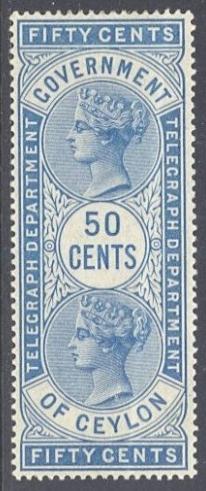
Stamp collecting is the collecting of postage stamps and related objects. It is related to philately, which is the study of stamps. It has been one of the world's most popular hobbies since the late nineteenth century with the rapid growth of the postal service, as a never-ending stream of new stamps was produced by countries that sought to advertise their distinctiveness through their stamps.

A stamp catalog is a catalog of postage stamp types with descriptions and prices.

The Stanley Gibbons Group plc is a company quoted on the London Stock Exchange and which specialises in the retailing of collectable postage stamps and similar products. The group is incorporated in London. The company is a major stamp dealer and philatelic publisher. The company's philatelic subsidiary, Stanley Gibbons Limited, has a royal warrant of appointment from Queen Elizabeth II.

James Alexander Mackay was a prolific Scottish writer and philatelist whose output of philatelic works was rivalled only by Fred Melville. He was described by John Holman, editor of the British Philatelic Bulletin, as a "philatelic writer without equal" but his reputation was damaged by a conviction for theft from the British Museum early in his career, which cost him his job there, and multiple accusations of plagiarism.

The first Stanley Gibbons stamp catalogue was a penny price list issued in November 1865 and reissued at monthly intervals for the next 14 years. The company produces numerous catalogues covering different countries, regions and specialisms; many of them are reissued annually. The catalogues list all known adhesive postage stamp issues and include prices for used and unused stamps.

A stamp dealer is a company or an individual who deals in stamps and philatelic products. It also includes individuals who sell postage stamps for day to day use or revenue stamps for use on court documents. Stamp dealers who sell to stamp collectors and philatelists are of many kinds and their businesses range from small home operations to large international companies.

The Rare 2d Coil was an experimental vertical coil stamp, denominated 2d, issued by the Irish Post Office in 1935 and is one of the scarcest, and most valuable, Irish stamps. It is often referred to by stamp collectors simply as "Scott 68b" or "SG 74b", being the Scott and Stanley Gibbons stamp catalogue numbers respectively.

In philately a lettercard or letter card is a postal stationery item consisting of a folded card with a prepaid imprinted stamp. The fact that it is folded over gives the writer twice as much room for the message compared with a postal card. The message is written on the inside and the card is then folded and sealed around the edges. The recipient tears off and discards the perforated selvages to open the card.
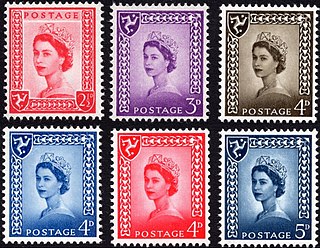
This is a survey of the postage stamps and postal history of the Isle of Man.
This is a survey of the postage stamps and postal history of Brunei.

This is a survey of the postage stamps and postal history of Liechtenstein.
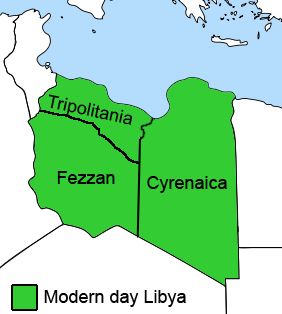
This is a survey of the postage stamps and postal history of Cyrenaica, now part of Libya.
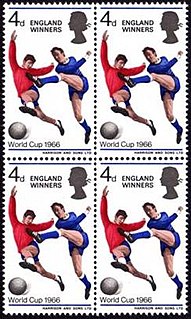
The England Winners stamp was a fourpenny commemorative stamp issued in 1966 to mark England's victory in the 1966 World Cup. The stamp was issued on the orders of the then Postmaster General Edward Short and created by a new printing of the lowest value of the three British 1966 World Cup stamps with the words ENGLAND WINNERS added.
This is a survey of the postage stamps and postal history of Grenada.

The Universal Private Telegraph Company, Limited was formed in 1861 to exploit Professor Charles Wheatstone’s 1858 Universal Telegraph. The company was to "...carry out a system by which banks, merchants, public bodies and other parties may have the means of establishing a telegraph for their own private purposes from their houses to their offices, manufactories or other places".

Bonelli's Electric Telegraph Co. Ltd. was formed in August 1860 by Henry Cook, an American, of 69 Lincoln's Inn Fields, London, and Eastbourne, with an initial capital of £25,000. The company was formed to exploit the telegraph system of Gaetano Bonelli of Italy, but the firm had limited success and it failed in 1864.
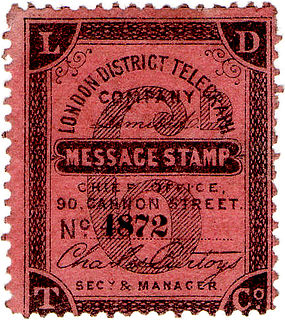
The London and Provincial Telegraph Co. Ltd. was formed in 1859 as the London District Telegraph Co. Ltd., being renamed in 1868.
